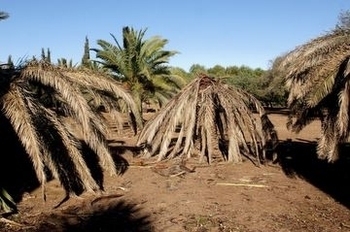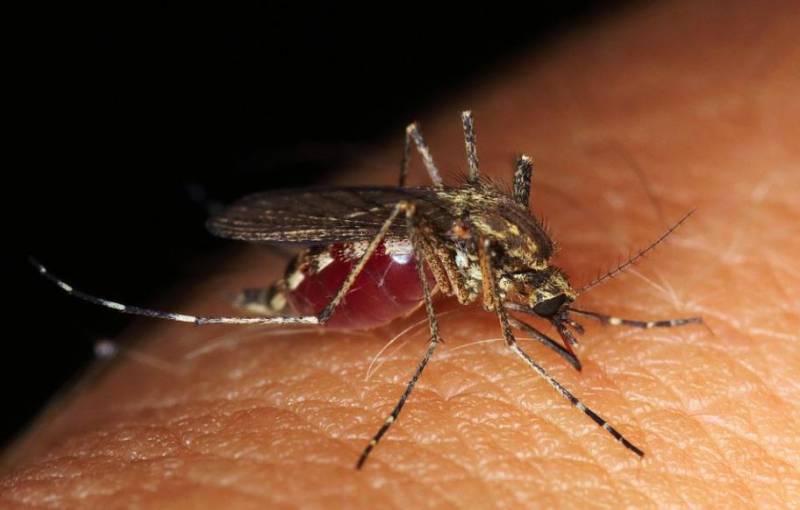

- EDITIONS:
 Spanish News Today
Spanish News Today
 Murcia Today
Murcia Today
 Alicante Today
Alicante Today
What to do when an uninvited Queen takes up residence
Dealing with bee and wasp nests
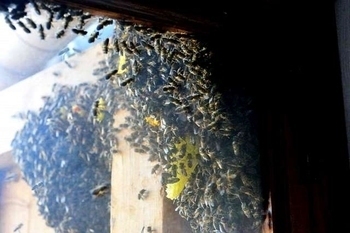 It´s funny how things pan out. Last year we were running around trying to find a beekeeper for everyone else and this year we needed one ourselves.
It´s funny how things pan out. Last year we were running around trying to find a beekeeper for everyone else and this year we needed one ourselves.
The office is a converted garage area, so we have left the external wooden doors in place, but fitted internal doors as the old wooden ones have very large gaps which let in an awful lot of wind in the winter, a location which attracted the attention of a queen bee in search of the perfect location in which to form a hive.
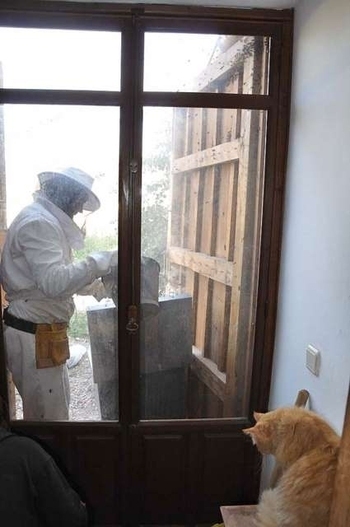 We didn´t notice it at first as a bookcase covered in the corner, but within just a few days we had a sizeable and extremely active nest building right outside the entrance of the property, a situation which could endanger anyone coming in or out of the door, so leaving it to continue growing was really not an option.
We didn´t notice it at first as a bookcase covered in the corner, but within just a few days we had a sizeable and extremely active nest building right outside the entrance of the property, a situation which could endanger anyone coming in or out of the door, so leaving it to continue growing was really not an option.
Steve, the English beekeeper recommended by yourselves last year came over to remove the hive, a fascinating process which took several hours due to the size and active nature of our unwanted tenants.
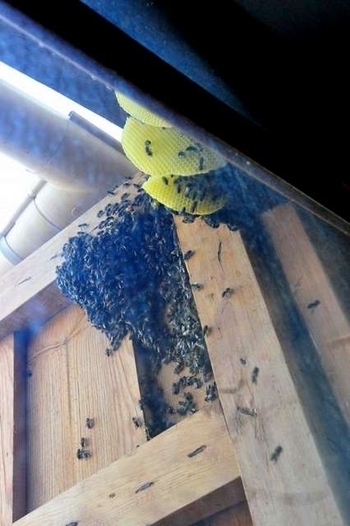 Our main priority was to relocate the bees, so to achieve this a new hive had to be created in which they could live, so Steve brought along a wooden hive with pre-prepared sheets of beeswax stretched across wire racks. He had coated these with a honey and sugar solution to attract the bees, but the real key to persuading the bees to take up residence in the box was moving the Queen bee out of the location she had chosen for herself and into the location we wanted her to be in, so to achieve this, Steve had to break into the existing nest and get her out.
Our main priority was to relocate the bees, so to achieve this a new hive had to be created in which they could live, so Steve brought along a wooden hive with pre-prepared sheets of beeswax stretched across wire racks. He had coated these with a honey and sugar solution to attract the bees, but the real key to persuading the bees to take up residence in the box was moving the Queen bee out of the location she had chosen for herself and into the location we wanted her to be in, so to achieve this, Steve had to break into the existing nest and get her out.
Dressed in fully protective clothing he lit up a smoke can and squirted it behind the door to calm the bees, then slowly opened up the external door, breaking into the nest, an act which sent hundreds of bees buzzing skyward in protesting consternation.
 Carefully he removed the existing nest and placed it inside the box, complete with the Queen, and removed all traces of the existing nest to try and attract the bees into the new box.
Carefully he removed the existing nest and placed it inside the box, complete with the Queen, and removed all traces of the existing nest to try and attract the bees into the new box.
Gradually, the lure of the queen drew them in, and as dusk fell, their natural instincts to return to the nest drew them all in, Steve dislodging them constantly from the old location with a feather , smoking them to calm them down, hoping the powerful pheromones excreted by the queen would draw them into the box, and gradually they went for the most part, so by the time it was dark, virtually all of them were safe inside the box and the lid could be closed to take them away.
 3 years ago we signed our finca into the Global Nature protected finca network, which means that we personally made a commitment to organic gardening. It´s a hard path to follow, but after several years battling to crop our almonds and sell them, we´ve been forced to give up, as the time required to prune, plough and harvest is impossible to give, due to the intensity of producing this web product, and the return is so low that it costs more to employ someone else to do the work than the almonds are worth.
3 years ago we signed our finca into the Global Nature protected finca network, which means that we personally made a commitment to organic gardening. It´s a hard path to follow, but after several years battling to crop our almonds and sell them, we´ve been forced to give up, as the time required to prune, plough and harvest is impossible to give, due to the intensity of producing this web product, and the return is so low that it costs more to employ someone else to do the work than the almonds are worth.
There is no chemical spraying here now ( apart from when scale insects strike) and the finca is awash with bees and flowers as a result, so constant vigilance is necessary to ensure nests like this don´t start forming in the wrong places again.
Only one Queen can live in a hive, so if a second is born she must leave, seeking a new place in which to form her own colony, and now is when it happens.
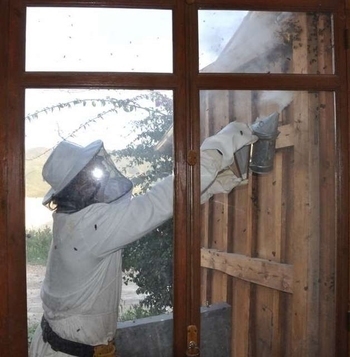 So if you need an english speaking beekeeper, capable of dealing with wasps and bees nests, Steve will be happy to oblige, for a fee, as fuel, chemicals for dealing with wasps and hives cost.
So if you need an english speaking beekeeper, capable of dealing with wasps and bees nests, Steve will be happy to oblige, for a fee, as fuel, chemicals for dealing with wasps and hives cost.
Contact details stethebeeman@gmail.com
Tel 634 315 253
To read the article prepared last year which has a lot of helpful advice sent in by readers about how to deal with wasps, Click bee and wasp information.
An interesting Bee Fact to bear in mind next time you buy a jar of honey:
To make one pound of honey, the bees in the colony must visit 2 million flowers, fly over 55,000 miles and will be the lifetime work of approximately 768 bees, as a single bee will generate only half a teaspoon of honey in her entire lifetime.























